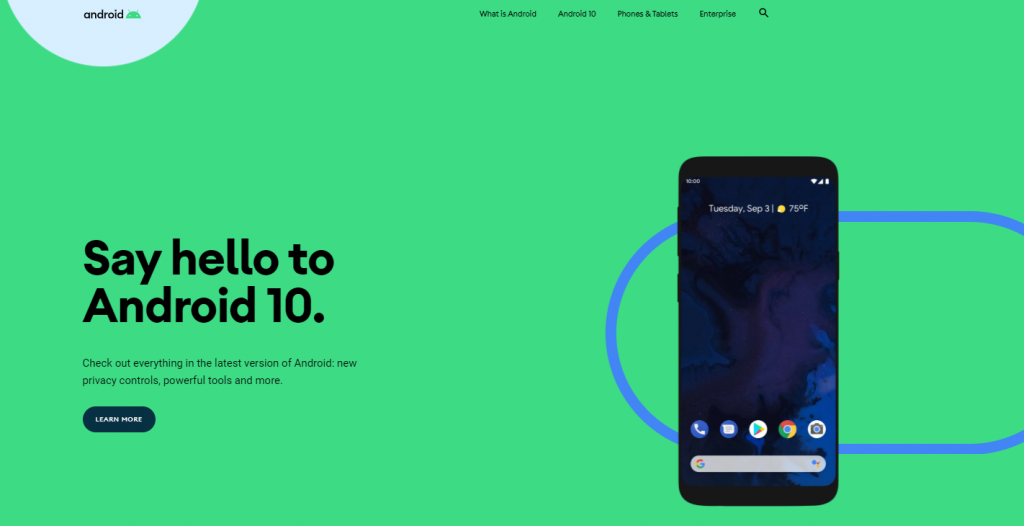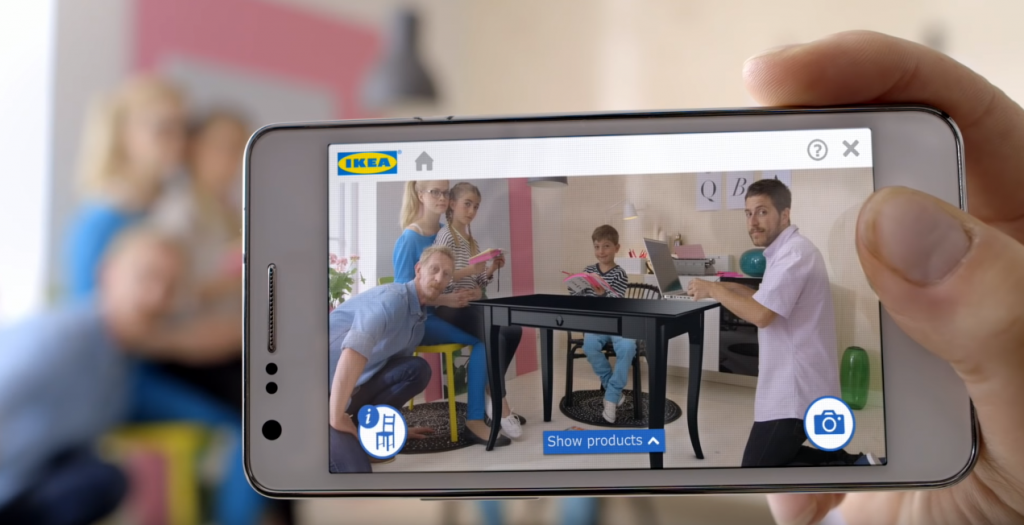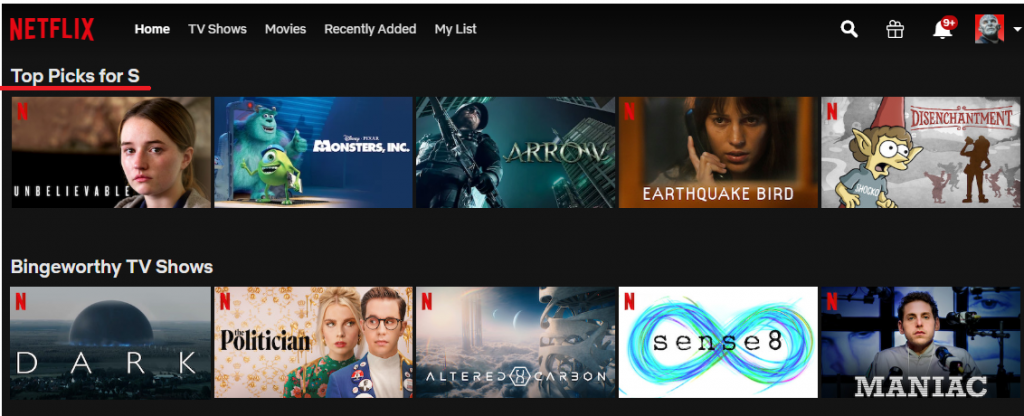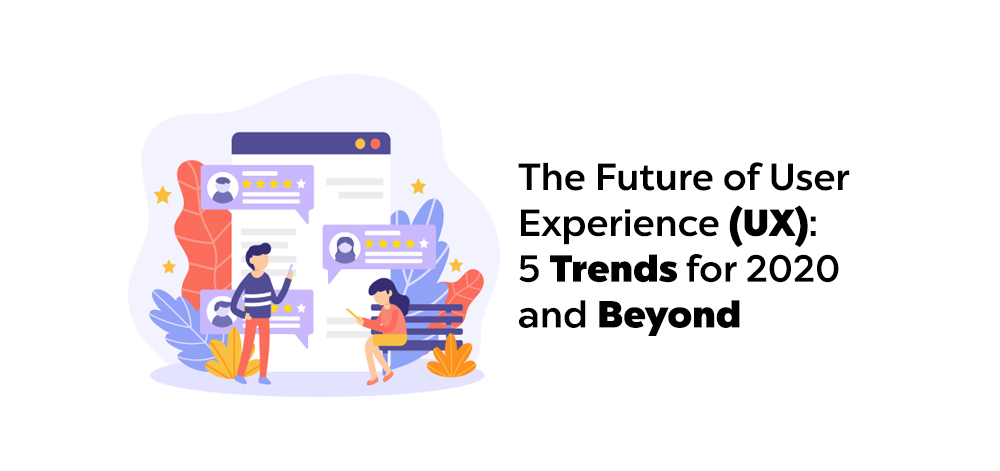The Future of User Experience (UX): 5 Trends for 2020 and Beyond
As technology evolves, user experience (UX) has come to play an important role in determining the success or failure of your business.
For this reason, UX should be evaluated regularly through metrics like the net promoter score (NPS) to measure your users’ likelihood to recommend your product, service or experience to their peers.
As modern consumers want to discover new ways to make their lives easier, businesses need to offer them solutions that will not only help them solve problems but also give them a rewarding experience that will stay with them throughout their user journey.
While advancements like those shown in the hit TV series Black Mirror are still far away from us, certain developments in UX design have allowed us to take a glimpse into a future that will change UX forever.
Before delving into the best trends you need to know to give better user experiences, let’s take a look at the importance of UX for modern businesses.
Why Is UX Important for Businesses?
When we talk about UX we refer to a user’s interaction, unique feelings, and experiences with a specific product, website, app or service.
According to the definition of UX, to achieve the best possible experience “there must be a seamless merging of the services of multiple disciplines, including engineering, marketing, graphical and industrial design, and interface design.”
However, apart from the seamless merging of your operations, taking into account user feedback and incorporating user suggestions into your design will offer you the unique opportunity to create great UX.
As technology and society evolve, more needs are bound to emerge and for that reason businesses with optimized UX designs are those who will, inevitably, win more users and have more conversions.
To see how important UX is for businesses, let’s take a look a some of the benefits of investing in UX design:
Increase Conversion Rate
Boosting conversions is one of the challenges that old and new online businesses want to achieve when they use technology to promote new products or services.
As experience has shown us, high-converting pages are those that deliver unique experiences.
For example, when you create a landing page for a new product, UX design can increase the effectiveness of your CTAs, capture leads easier and improve your lead generation funnel.
To convert more, you need to make your visitors realize the value of your pages and the best way to do it is by delivering the most advanced UX design that will make them want to interact with you more.
Improve Return-on-Investment (ROI)
Investing in UX design is not only the best way to increase the number of new users but also one of the most cost-effective techniques.
With the ROI of every dollar invested in UX design ranging from $10 to $100, it is absolutely necessary to deliver amazing experiences whether you promote higher-end products or not.
As users value the effort put into user-friendly designs, investing in improving your website or mobile app UX design will help you turn them into loyal supporters, cost you less in improvements and let you enjoy the benefits of a high-converting page or application.
Distinguish Your Business
Since there are hundreds of companies out there selling similar products or services with similar features and prices, you need to find a way to distinguish yourself from the crowd and be as innovative as possible.
As the execution stage of every project lifecycle can determine the success of your end result, finding ways to deliver unique UX designs and user-friendly interfaces will help you capture more users and convert them into loyal supporters.
By creating functional interfaces you will be able to establish yourself as a business that values user satisfaction and be your powerful weapon to enhance your conversion rate and landing page optimization.
Now Let’s Take A Look At The Top 5 UX Trends You Need To Know For The Future
1. The Age of Material Design
Material design is Google’s design language that supports onscreen touch experiences through rich features and realistic motions that imitate real-world objects.
Through this design language, UX designers can employ 3D effects, realistic lighting, and animation to deliver first-class experiences that will grab users’ attention.
While the famous flat design has provided users with clean and minimalist pages that convert, the material design offers a three-dimensional setup that will make your pages and applications more interactive.
Equipping your campaigns with realistic features and animations will help you combine your content with graphic design in a way that will highlight the benefits of your product or service and incentivize users to click on your CTAs.
Here’s an example from Android:

2. The Impact of Microcopy
Microcopy is like your MicroSD card.
Despite being tiny, its capabilities are tremendous compared to its size.
While microcopy might be just small bits of information found on an interface, its conversion power is immense since these little pieces of information will guide a user through a process.
For example, image filling an extensive subscription form only to find out that when you click on the subscribe button it won’t let you proceed.
While the red box indicator can help you discover what’s wrong, sometimes this indicator isn’t enough to discover what the user has to do to proceed.
The frustration caused by the lack of hints can discourage a user who will eventually give up on subscribing.
Microcopy, in this case, can help you clarify things and assist users, minimizing frustrations and increasing the efficiency of your forms.
For instance, here’s an example from Timely:

Here, the microcopy is meant to solve any possible confusion and explain why you need to enter your phone.
By clearing any doubts or misconceptions about your products or services you can incentivize new users to click on your CTA a lot more effectively since they’ll know exactly what they will get..
And to effectively enhance your users’ experience and turn them into loyal supporters of your applications, you should also consider using a variety of UX design tools like Analytics, A/B Testing, and Heatmapping Tools.
3. Display the Future with Augmented Reality (AR)
Back in 2016, Pokemon GO took the world by storm with its new Augmented Reality features.
While that’s the point where the majority of users truly got acquainted with AR, truth is that AR and its exceptional capabilities have been used in various fields apart from gaming.
As one of the most impressive UX design trends, companies have leveraged it to give users a taste of what the future holds, help them solve problems and get them to convert.
For instance, IKEA has an app called IKEA Place built on the Apple AR Kit that allows users to envision and build their ideal home through AR.

While placing furniture around and resizing objects isn’t as thrilling as catching Pokemon, brands like IKEA have realized that using AR not only does not only boost the furniture-buying intent but also solves one of the greatest buyer problems in history: which piece of furniture is right for my house?
Giving fast solutions to big user pain points is the most efficient way to increase your company’s engagement and promote your growth using technology that can give you endless possibilities.
4. Personalized User Interfaces
Personalization is all about tailoring a product or a service to accommodate specific individuals with specific needs and preferences.
As UX primarily focuses on delivering amazing experiences that will make a user feel unique, personalizing your interfaces and giving users something more than the generic version of your product or service can work miracles.
While customization is all about enabling a user to make changes to their experience by configuring certain elements like changing colours or backgrounds, personalization is done by the system in use through a series of processes that draw information from the users’ preferences and online behaviour.
A prime example of interface personalization is Netflix’s targeted suggestions based on watching history.
Here’s an example from my account:

5. Hey Alexa, How Can I…
Alexa, Siri, Cortana, and Google Assistant are some of the most popular voice-controlled assistants that have the ability to answer questions and even connect your entire life with a simple voice command.
As the technology of the future, voice-activated interfaces can take down specific boundaries and offer users an easier way to interact.
According to a report by eMarketer, 111.8 million people in the US will use a voice assistant at least monthly, which equals to 39.4% of internet users and 33.8% of the total population.
Since mobile devices have become a vital part of our daily lives, VUIs will offer the opportunity to take advantage of our devices to solve common problems without even having to type them down.

Despite having numerous benefits, there are still certain limitations that make their full implementation and adoption a bit difficult.
For instance, one of the greatest VUI challenges is the lack of accuracy of certain voice commands and lack of privacy in public places.
Nevertheless, investing in VUI design can help you find smarter solutions to increase accessibility and functionality and deliver a seamless experience your users will be able to control with a simple voice command.
Takeaway
While the benefits of having amazing UX designs are plenty, increasing your conversions, improving your ROI and distinguishing yourself in the marketing arena will help you grow your business beyond measure.
So, to step up your business game you need to embrace the current changes in design, leverage the power of microcopy, experiment with augmented reality, consider VUIs and personalize the user experience to get more satisfied users who will support you unconditionally.
Keeping up with the latest UX design trends will help you discover what works best with your users and how you can keep them happy and engaged with your company, so next time you plan your next UX design, spare a few moments to get yourself familiar with the latest UX trends and rock your way to the top.
